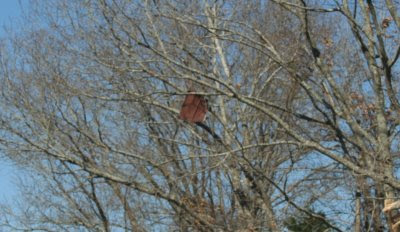In a highly sheared environment, which we had Tuesday night, sometimes on the ends of a “bow echo” will form an area of rotation called a “bookend vortices.” It is called this because the rotation is located at the ends of the bow shape. In a highly sheared environment winds will cause this rotation to strengthen. The environment on the northern counter-clockwise circulation in a highly sheared atmosphere can become favorable for tornado development.

As the northern end of the bow echo entered Northern Smith County we can see a rear inflow notch or an area where winds are punching into the back of the storm. This is depicted in the radar image above with the air flow noted by arrows. The north and south ends of strong bow echoes will have these bookend vortices continuing to push are towards the center of the line helping create the widespread wind damage. The northern vortex began to tighten and eventually lead to the development of the tornado.

In the next radar image taken five minutes later, you can start to see precipitation wrapping around the vortex similarly to what you would find in a mesocyclone found on the southwest side of a classic supercell.(Mesocyclone is a localized area of low pressure formed by the most severe thunderstorms called supercells. Mesocyclones are what give birth to the strong violent tornadoes like the one the struck Lone Grove, OK Tuesday.)

Finally in the last image when can see the air rotation has tighten and eventually was stretched in the storms updraft causing the tornado to form near the intersection of CR 482 and CR 483 in Northwestern Smith County. At the time of the image it appears the storm has already moved past however, we must remember that in a highly sheared environment the precipitation is being pushed forward, away from the storm. Over this region of East Texas the radar beam which sends back and image is nearly 10,000’ in the atmosphere so the actual updraft of the storm lags behind the echo show by 5000’ or so.

So how do we know it was a tornado? Well, the next photo paints the picture pretty clear. In the photo I have four points marked A, B, C, and D. “A” is a pine tree which was snapped in half. “B” is the top of the snapped tree which was blown to the east. “C” is another pine tree next to “A” which was blown down to the northwest. And finally “D” is another tree in the background blown down to the northeast. It is this scattering of debris which shows us it was a tornado. If we were looking at straight line wind damage, all the trees would be facing the same direction like we showed from “Chopper 7” in the Sunrise Shores area of Henderson County. Now just because the damage in Sunrise Shores was not caused by a tornado does not mean it was not as bad. In some cases it looked much worse than the tornado damage. We all seem to get caught up in the fact that anytime damage occurs from wind, a tornado must have hit us. 90 mph winds will do a tremendous amount of damage whether it is straight or blowing in a circle. This is why all severe thunderstorms should be taken very seriously.
Here are a few more photos I shot of the damage. The first photo shows tree debris down and scattered about. My daughter Halen is making sure Daddy gets all the information.

The next photo is metal roofing or siding carried at least a ½ mile. There were no close structures this could have come from.

So what have we learned from this event. Bookend vortex tornadoes can and do form with very little or sometimes no warning at all. But you can be assured that the StormTracker Weather Team watches all “bow echoes” very closely and will break in to warn the public if we think a tornado is forming. You may remember us breaking into programming last year when a bookend vortex produced an EF-1 tornado took a 21 mile path through Gregg and Rusk counties. These events are something we have to live with in this part of the country and we will always be watching the skies to keep you safe.

No comments:
Post a Comment